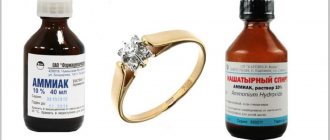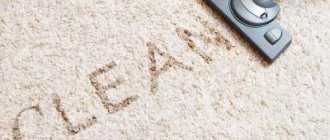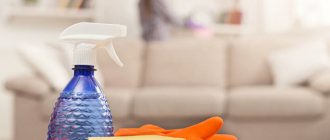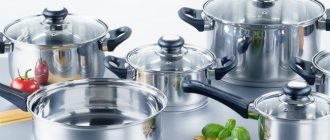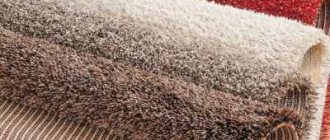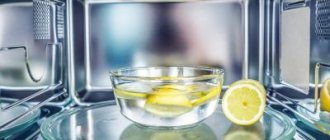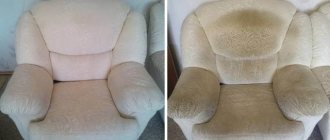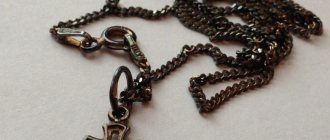People learned to alloy copper with various metals to produce bronze and brass even before our era. This is precisely the reason for their oxidation and the appearance of green and dark spots on the surface, which you constantly have to fight and use different methods to clean the surface. The difference in other components of bronze and brass determines the difference in their characteristics and use in various industries.
What is brass and bronze
Brass refers to alloys of copper and zinc. Different brands of brass contain iron, nickel, manganese, and tin. Previously it was used, mainly due to its light yellow hue, for making jewelry, including fakes, which were passed off as gold items. Characteristics of brass:
- it is ductile, therefore less durable than bronze;
- found application in the manufacture of bimetallic elements;
- resistant to corrosion;
- unstable to aggressive environments (sea water).
Humanity learned to make bronze products several centuries ago, but at that moment it contained only 2 components:
- copper;
- tin.
Brands of bronze with this content are now called tin. In other brands, tin was replaced by aluminum, iron, beryllium, silicon, lead, which is why they are called tin-free. Bronze, due to its special strength, is used to make monuments, bells, candlesticks, and candelabra. Using the fluidity of bronze in the molten state, products of complex configurations are made from it.
Products made of bronze and brass can be distinguished by their fracture. In brass it is light yellow in color and has a fine-grained structure; in bronze it is a darker color with a coarse grain. Bronze consists of only 2 components, and brass can be either 2 components or consisting of several metals.
Causes of plaque
The new bronze product has a characteristic golden-brown hue. But gradually this noble color fades, changing to a darker color, and in places becoming covered with a black coating. This occurs as a result of the reaction of metal ions with air molecules and the formation of oxides on the surface of the alloy. The surface film, consisting of copper oxide (CuO) and protecting bronze from further oxidation and corrosion, is called black and noble patina. They prefer not to remove it, believing that such a coating adds mystery, antiquity, and grace to the products.
Another type of patina is green, called wild and causes the destruction of antiques. Appears as a result of prolonged exposure of bronze to a damp room. Hydrogen sulfide and ammonia, which are present in humid air, contribute to the formation of emerald-colored sulfates on the surface of the product. The green coating penetrates deeper and deeper into the composition, causing destructive damage to the object. This type of plaque can be combated using various means, including home remedies.
What not to use
Despite the strength and unpretentiousness of the metal, there are contraindications when caring for objects made of bronze. It is strictly forbidden to use chemical liquids and gels used when washing dishes and plumbing fixtures. In addition to not removing all the accumulated dirt, they will also ruin the surface of the product - your favorite item may change color and become dull. Restoring the previous appearance after this is a long and more expensive matter.
thimble Puss in Boots
Cleaning methods
Over several centuries, the population has studied many methods that more or less help clean the surface of bronze products. Among the remedies that help with this problem are:
- flour;
- soda;
- lemon juice;
- table vinegar;
- ammonia;
- finely ground chicory;
- solutions of sulfuric and oxalic acids;
- sawdust;
- school chalk.
During the cleaning process you will also need:
- cotton rag;
- a piece of cloth for polishing;
- container for heating components;
- gloves;
- glasses.
Attention!
Bronze cannot be cleaned once and for all. After cleaning, after some time, plaque appears again, and the procedure is repeated again and again.
Products for cleaning bronze products
How to clean bronze using affordable means? You may need:
- juice squeezed from several lemons;
- sodium bicarbonate (this product, better known as “baking soda,” is found in almost every home);
- Wheat flour;
- regular table salt;
- vinegar;
- 10% ammonia solution (it will probably be found in every home medicine cabinet);
- oxalic acid, which can be purchased at any pharmacy;
- chicory, ground to powder;
- acetone (you can find it at a hardware store);
- sulfuric acid;
- chalk;
- wood sawdust.
Regular baking soda can clean almost anything, and it is non-toxic and quite effective.
When cleaning bronze, brass and other alloys, the following auxiliary and protective equipment must be used:
- gloves that will protect your hands;
- napkins;
- a small piece of woolen fabric;
- cotton rags;
- container in which all ingredients will be mixed.
Cleaning with food products
Among the food products used to clean bronze are:
- Chicory. Finely ground chicory is diluted in water to a paste. Apply the mixture to a candlestick or other item and rub with a soft brush, preferably a toothbrush. It is convenient for cleaning small and embossed parts. When cleaning, press lightly, without force. The cleaning agent is washed off under running water. Then blot with napkins and dry, wiping with a cotton cloth.
- Peas. A few spoons of peas are placed in a saucepan with water, and a figurine, cigarette case or bronze trinket that needs cleaning is also placed there. Water covers the head of the product. Pea water is boiled for 2-3 hours and cooled. Objects are cleaned of plaque using a soft brush and washed with plenty of water. Then they are thoroughly wiped from moisture.
- Soda and lemon juice. A mixture of baking soda and lemon juice can save bronze from oxidation. Squeeze the juice out of 1-2 lemons and add the same amount of soda to it. The mixture is quickly mixed, applied to the surface that needs to be cleaned and left for 30 minutes. Then the residue is washed off under running water and the surface is wiped dry. This method not only helps get rid of green plaque, but also restores shine.
- Flour, salt and table vinegar. To clean bronze at home, use a mixture of flour and salt. They are taken in equal quantities, diluted with table vinegar to the consistency of sour cream. Apply to the surface to be cleaned, for example, on a bronze chandelier, wait about 30 minutes. The composition is washed off with plenty of water. If the product is poorly cleaned, the procedure is repeated. The dry product is polished with cloth until it shines.
Video
To learn more about the cleaning procedure, watch the following videos:
Young mother, wife and part-time freelancer. Being a lawyer by training, I am accustomed to collecting and providing the most complete and reliable information. Constantly improves in the professional field and strives for personal growth and development.
Found a mistake? Select the text with the mouse and click:
The dishwasher cleans more than just plates and cups. You can load it with plastic toys, glass lamp shades and even dirty vegetables, such as potatoes, but only without using detergents.
Before removing various stains from clothing, you need to find out how safe the selected solvent is for the fabric itself. It is applied in a small amount to an inconspicuous area of the item from the inside out for 5-10 minutes. If the material retains its structure and color, you can move on to stains.
The habit of using an automatic washing machine “sparingly” can lead to the appearance of an unpleasant odor in it. Washing at temperatures below 60℃ and short rinses allow fungi and bacteria from dirty clothes to remain on internal surfaces and actively multiply.
Fresh lemon is not only suitable for tea: clean dirt from the surface of an acrylic bath by rubbing with half a cut citrus, or quickly wash the microwave by placing a container of water and lemon slices in it for 8-10 minutes at maximum power. The softened dirt can simply be wiped off with a sponge.
The easiest way to remove scale and carbon deposits from the soleplate of the iron is with table salt. Pour a thick layer of salt onto the paper, heat the iron to maximum and run the iron over the salt bed several times, applying light pressure.
Stretch ceilings made of PVC film can withstand from 70 to 120 liters of water per 1 m2 of their area (depending on the size of the ceiling, the degree of its tension and the quality of the film). So you don’t have to worry about leaks from neighbors above.
If your favorite things show the first signs of gestation in the form of untidy pellets, you can get rid of them using a special machine - a shaver. It quickly and effectively shaves off clumps of fabric fibers and returns things to their proper appearance.
Threads made of gold and silver, which were used to embroider clothes in the old days, are called gimp. To obtain them, the metal wire was pulled for a long time with pliers to the required fineness. This is where the expression “to drag out the rigmarole” came from - “to do long, monotonous work” or “to delay the completion of a task.”
There are special traps to combat moths. The sticky layer with which they are covered contains female pheromones that attract males. By sticking to the trap, they are eliminated from the reproduction process, which leads to a decrease in the moth population.
Source
Cleaning with household chemicals
If cleaning with food products does not bring results, use household chemicals. The following are suitable for cleaning bronze at home:
- Ammonia. Ammonia is poured into a small container and the entire product is immersed there for 15 minutes. Then remove with tweezers, rinse thoroughly under running water and wipe dry with rags or napkins.
- Acetone. Use a cotton pad soaked in solvent to wipe the contaminated item, changing them as they become dirty until the cleaning material stops getting dirty. The item is washed with water, dried and polished with cloth.
- Oxalic acid. Used in advanced cases. Dissolve 1.5-2 tablespoons of sorrel in 2 liters of water. Objects are dipped into the solution; when the water turns dark, the objects are removed, washed with plenty of water and wiped dry with napkins.
- Soda Ash. Prepare a solution consisting of 1 liter of water and 20 g of soda. Dip a brush into the solution and wipe off plaque from the product. Thus, you can clean chandeliers, candlesticks, and candelabra that have a large volume. After cleaning, items are washed with water and wiped dry.
Attention!
Before working with aggressive media, you must wear goggles and gloves and, if possible, carry out work under a hood or in the open air.
Unusual methods
People have come up with several unusual methods of combating plaque. You can clean bronze at home using sawdust. Cleaning rules:
- Concentrated acetic acid is poured into a glass container.
- Half the volume is filled with sawdust and the mass is allowed to swell.
- Put a glove on your hand, pick up the swollen sawdust with a cloth and rub the stained areas.
- Constantly change the mixture, throwing away the contaminated one and adding a new one.
- Wash cleaned surfaces with plenty of water and wipe dry.
You can clean bronze at home using toothpaste or powder. Small stains on antique items can be removed with an old toothbrush with toothpowder or toothpaste on it. This method is especially good for finely textured surfaces. The same composition polishes bronze items well.
Alloy care rules
Before you start cleaning, to make the product shine, you should familiarize yourself with the following recommendations:
- Items with brass or varnish coating must not be treated with aggressive agents. They are wiped with a rag or cotton pad, previously dipped in a soap solution.
- Severe dirt or oxides require the use of cleaning products that do not contain abrasive components. They are bought in special stores or made at home. First you should test it on an inconspicuous area of the accessory. To remove plaque, use brushes with soft bristles.
- Compositions with acetic, citric or hydrochloric acid act quickly and effectively, but if used incorrectly they will cause harm. Therefore, you need to act with the utmost caution.
- Do not try to wash brass utensils in the dishwasher. It will darken and lose its aesthetic appearance.
Cleaning coins using Trilon B
Ancient coins found in your own garden or during construction can be cleaned using Trilon B - used in chemical laboratories for analysis. Procedure:
- Found coins (coins) are first washed from dirt with soap and warm water.
- 1 tbsp. with a slide of Trilon B is dissolved in 200 ml of warm water.
- Place coins in the solution.
- Stir from time to time so that the coins do not stick to each other.
- Cloudiness of the solution indicates the beginning of cleaning from plaque.
- After 40 min. The coins are taken out and washed under water.
- If the products are poorly washed, the procedure is repeated.
- To prevent the coin from rusting in the future, sulfur ointment is rubbed into its surface under running warm water to form a patina that prevents oxidation.
Express cleaning
Cotton pads treated with:
- citric acid, with its help the green patina disappears;
- glacial acetic acid (99%), it dissolves yellow spots;
- 5% ammonia, removes red spots;
- acetone, destroys blackness and dirt.
Attention!
To clean and polish coins at home, GOI paste is also used, which consists of chromium oxide, fatty binders and auxiliary additives. The abrasive paste returns shine to products and removes dark spots on the surface.
Rust removal
All of these methods fight not only green plaque, but also rust of varying degrees. If the depth of the lesion is large, then sulfuric acid and chromium are used against it. Cleaning steps:
- Pour 1 liter of cold water into a glass or ceramic container.
- Add 20 g of potassium dichromate (potassium dichromate) and stir.
- Pour 20 ml of concentrated sulfuric acid over a glass rod and mix.
- Place items that need cleaning.
- After the rust stains are corroded by acid, the objects are removed and immersed in a solution with ammonia, keeping it in it for about 20-30 minutes.
- Antique items are taken out, washed with plenty of water, dried, and rubbed until shiny with cloth.
Rust is removed using pea porridge:
- Yellow peas are boiled to a porridge state.
- Allow to dry completely.
- Remove the dried composition with a rag.
- The product is washed with plenty of water and wiped dry.
Cleaning bronze with gilding
This method is used by jewelers and antique lovers. The cleaning agents they use are aggressive and require careful and attentive handling. Cleaning work should be carried out with gloves and safety glasses. Cleaning steps:
- Bronze is wiped with a solution of KOH or NaOH to degrease and soften plaque.
- Prepare a cleaning composition. Mix 30 parts water, 8 parts nitric acid and 8 parts aluminum sulfate. It is applied to the bronze with a brush and left to dry completely in the sun or near a heat source.
- Wash off the composition with plenty of water, wipe dry and polish.
How to clean bronze from rust at home
If items are corroded, you can return them to their original appearance using food peas.
Instructions:
Boil yellow peas. Without allowing it to cool, grind until the consistency of thick porridge. Apply the paste to the rusty areas and leave to dry. After this, wash the product in boiling water, removing any remaining rust with a brush. Wipe dry on all sides.
Peas are also used if the item is heavily infested with flies.
Instructions:
Boil yellow peas, grind them in the broth with a blender. Dip the contaminated item into the broth and boil for 2 hours. Once cooled, rinse in warm water with a soft brush, removing any remaining peas.
Attention.
To avoid damaging the glossy surface, use pastes and intensive cleaning occasionally, only in cases of severe oxidation. For regular maintenance, simply wipe the items with a damp cloth and then with a dry cloth.
Preventive measures
Cleaning the patina is not enough. To slow down the oxidation processes of bronze after cleaning:
- Rub with wax or paraffin until shiny. These substances leave an invisible film on the surface, which prevents the interaction of metal ions with air oxygen and water vapor.
- Coins are coated with sulfur ointment, which forms a black patina on the surface and prevents oxidation of the surface.
- Particularly valuable ones are placed separately in a piece of velor or suede and placed next to a bag of silica gel to absorb excess moisture.
- Regular cleaning with a flannel cloth reduces the likelihood of patina.
- Small products are periodically cleaned, preventing the appearance of large stains and rust, by dipping them in a soap solution consisting of grated laundry soap and water for 1-3 days, then cleaned with a soft brush. Rinse with water and wipe dry.
Having bronze objects in your home is an expensive pleasure, since they require constant care, but at the same time, the status of the owner as a connoisseur of antiquities and a person of taste increases. If treated with care and properly stored, bronze accessories will last a long time and will provide aesthetic pleasure.
How do you like the article?
Storage of bronze jewelry.
When you remove jewelry after wearing it, dry it with a clean, soft cloth before putting it away.
This is done to remove any traces of oils from the leather as they can speed up the tarnishing of the bronze.
Since the tarnishing process is facilitated by the presence of oxygen in the air, it is advisable to store your bronze jewelry in a plastic bag to slow down the formation of patina.
Make sure you wipe them dry before storing them: leaving them in contact with air makes it easier for plaque to form.
